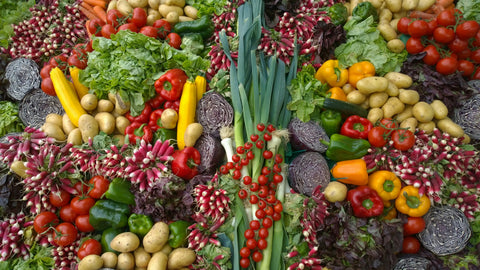You may have noticed something if you dropped a bottle of olive oil in your last shopping trolley. As good as that stuff tastes (and who doesn’t love olive oil), it’s getting expensive. Very, very expensive.
Unfortunately for the people of Spain, severe drought conditions over the last few years have impacted on crops and production, resulting in price hikes. Australia gets more than half of its olive oil from Spain, and prices of oil from the country have increased by 71 per cent.
There are even stories of olive growers having to take steps to protect their crops and warehouses from being robbed. It’s not a great time for farmers over there.
While there might not be anything that we can do to help that particular situation (other than be aware of it and take the steps we need to to combat climate change so the world can return to an equilibrium), there are alternatives to olive oil that can work just as well in a wide range of different dishes. Consider these alternatives for your own cooking:
Grapeseed Oil: Grapeseed oil offers a similar fat profile to olive oil, containing two grams of monounsaturated fats and 9.5 grams of polyunsaturated fats per tablespoon. Additionally, it’s rich in vitamin E, an antioxidant that may help prevent aging and chronic diseases. Grapeseed oil has a neutral taste, making it an excellent substitute when working with the contents of your Good & Fugly vegetable boxes or proteins.
Canola Oil: Canola oil has been shown to reduce cardiovascular risk factors. Compared to other oils, it lowers cholesterol levels and reduces triglycerides more effectively than olive oil. With nearly nine grams of monounsaturated fat and almost four grams of polyunsaturated fats, canola oil is a healthy and versatile option for sautéing, frying, grilling, and as a base for salad dressings and sauces.
Sunflower Oil: Similar to canola oil, sunflower oil can also lower cholesterol levels due to its fatty acid profile. Additionally, a single tablespoon provides over a third of the recommended daily intake of vitamin E. Cold-pressed sunflower oil is best for dressings and other cold applications, while refined sunflower oil can withstand high heat. It’s actually one of the best vegan options for frying, due to its high smoke point and more neutral flavour.
Coconut Oil: You do need to be a little careful with coconut oil, because it is higher in saturated fats than olive oil, or most of the other alternatives presented here, but it can be a suitable alternative to olive oil when used in moderation. In fact, its distinct flavour makes it superior in many tropical dishes and baked goods.
Avocado Oil: Avocado oil boasts a healthy fatty acid profile and a mild flavour. It has a very high smoke point, making it particularly useful in cooking applications. What’s more, because it won’t overpower the other ingredients it can be used in more subtle dishes, too. Most people use it in sautés, stir-fries, and salad dressings to add richness instead of olive oil.
And as for an alternative for dipping bread into? Well, there are plenty of good options there. Herbed butter is a popular one, especially with the flavours of rosemary, thyme and parsley. Tahini is another with an exotic Middle Eastern flavour from the ground sesame seed base.
Meanwhile, for a direct 1:1 replacement for olive oil as a condiment for that bread roll, consider a nut oil (particularly walnut, almond or hazelnut). These unique flavours are rich and aromatic, and while they don’t taste anything like olive oil, they do taste every bit as good on bread!
But when will we get cheap olive oil back?
The bad news is: Not in the immediate term. Australia’s about to enter its olive harvesting season, so we’ll see home-grown olive oil options on shelves. Unfortunately, the local weather wasn’t ideal for olives either, so while there hasn’t been devastation of the kind seen in Spain, crops have been lighter.
On a more positive note, these prices won’t stay high into perpetuity. There are signs that the drought conditions in Europe are easing and so, towards the end of the year, prices should start to ease in Europe, with the flow-on effect felt in Australia sometime after that.
We’re all looking forward to getting olive oil back in the pantry, and we’re all certainly hoping for farmers in Europe to get some much-needed relief. In the meantime, though, don’t just go without. Take the opportunity to broaden your palate a little – the world of oils is a fascinating one and there’s a lot to discover.



